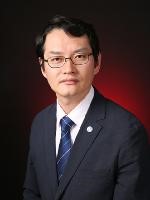
核反应堆工程(Nuclear Reactor Engineering)课程:前往报名学习
本课程是一门硕士研究生专业基础课程,课程目标在于培养学生发现、分析和解决问题的能力,提升培养学术思维、开拓学术视野、增强团队协作意识、提高英语写作能力,为从事研究生工作奠定学术基础。通过学习本课程,使学生掌握核能科学与工程相关专题的专业基础知识,掌握对学术问题的基本分析方法,对学科前沿有一定理解。
开设学校:哈尔滨工程大学;学科:工学、
本课程是一门硕士研究生专业基础课程,课程目标在于培养学生发现、分析和解决问题的能力,提升培养学术思维、开拓学术视野、增强团队协作意识、提高英语写作能力,为从事研究生工作奠定学术基础。通过学习本课程,使学生掌握核能科学与工程相关专题的专业基础知识,掌握对学术问题的基本分析方法,对学科前沿有一定理解。
-1.1 课程定位与研究生培养心得
-1.2 PRED+II模式
-2.1 非能动安全定义(Definition of Passive Safety Technology)
--Foundations and Course Content of Passive Safety System
--非能动安全的定义
-2.2 AP1000非能动堆芯冷却系统的组成(Composition of Passive Core Cooling System of AP1000)
--Passive containment cooling system
--Remark, Definition and Components
-2.3 非能动余热导出系统的运行(Operation of Passive Residual Heat Remove System)
--Passive Residual Heat Remove System (PRHR)
-2.4 非能动安全注入系统的运行(Operation of Passive Safety Injection System)
--Safety Injection and Depressurization
-2.5 非能动安全技术的优点与缺点 (Advantages and Disadvantages of Passive Safety Technology)
-2.6 非能动安全技术的思想与应用(Idea and Application of Passive Safety Technology)
-2.7 章节测试
--第3章 章节测试
-3.1 沸水堆基本介绍(Introduction of BWR)
--Introduction of BWR system and cycles
-3.2 沸水堆的特点(Characteristics of BWR)
--沸水堆的特点
-3.3 沸水堆安全壳系统(Containment System of BWR)
--沸水堆安全壳系统
-3.4 沸水堆的应急堆芯冷却系统 (Emergency Core Cooling Systems of BWR)
--BWR ECCS
-3.5 章节测试
--第4章 章节测试
-4.1 福岛核事故的概况(Overview of Fukushima Nuclear Accident)
--福岛核事故的概况
--General scene of Fukushima Nuclear Accident and NPP
-4.2 福岛核电站介绍(Introduction to Fukushima Nuclear Power Plant)
--Accident Process- Status of NPPS before earthquake
--福岛核电站介绍
-4.3 福岛核事故进程(Process of Fukushima Nuclear Accident)
--福岛核事故进程
--Accident Process- After earthquake
--Accident process- After tsunami
-4.4 事故总结与思考(Summary and Thinking of the Accident)
--事故总结与思考
--Why Unit 2 didn’t explore and how to avoid such accidents
-4.5 章节测试
--第5章 章节测试
-6.1 组合变量法举例
--组合变量法举例
-6.2 分离变量法举例
--分离变量法举例
-6.3 非定常流动与热传递(Unsteady Flow and Heat Transfer)
--Unsteady Flow and Heat Transfer-1
--Unsteady Flow and Heat Transfer-2
--Unsteady Flow and Heat Transfer-3
--Unsteady Flow and Heat Transfer-4
-6.4 推导方法的讨论
--推导方法的讨论
-7.1 概念与危害(Concepts and Disadvantages)
--概念与危害
-7.2 流动不稳定性的分类(Classification of Flow Instability)
--Classification of flow instability
-7.3 流动不稳定性机理分析(Mechanism Analysis of Flow Instability)
-7.4 自然循环系统内的流动不稳定性(Flow Instability in a Natural Circulation System)
-7.5 章节测试
--第7章 章节测试
-8.1 核反应堆材料的基本概念(Basic Concepts of Nuclear Materials)
-8.2 材料的辐照效应(Radiation Effects of Materials)
--材料的辐照效应
--Radiation Effects in Materials
-8.3 材料的辐射损伤机制(Radiation Damage Mechanism of Materials)
-8.4 脆性转变温度与材料肿胀(Brittle Transition Temperature and Material Swelling)
-8.5 材料的硬化和脆化(Hardening and Brittleness of Materials)
--材料的硬化和脆化
-8.6 反应堆材料辐照效应的思考(Thinking on Irradiation Effect of Reactor Materials)
-8.7 章节测试
--第8章 章节测试
-9.1 背景概述与堆型的发展(Generation IV Advanced Nuclear Reactor)
-9.2 第四代核电堆型介绍(Introduction of Generation IV Advanced Nuclear Reactor)
--Introduction of Generation IV Advanced Reactor(1)
--Introduction of Generation IV Advanced Reactor(2)
--Introduction of Generation IV Advanced Reactor(3)
-9.3 第四代堆总结(Summary of Generation IV Nuclear Reactor)
--第四代堆总结
-9.4 章节测试
--第9章 章节测试
-10.1 能源的需求与核能应用拓展(Energy Demand and Nuclear Energy Application Expansion)
-10.2 浮动核电站的研究与发展(Research and Development of Floating Nuclear Power Plant)
--Introduction of Marine Nuclear Reactors(1)
--Introduction of Marine Nuclear Reactors(2)
-10.3 空间核动力系统(Space Nuclear Power System)
--空间核动力系统
--Introduction of Space Nuclear Power(1)
--Introduction of Space Nuclear Power(2)
-10.4 章节测试
--第10章 章节测试
谭思超,主讲教师,中共党员,工学博士,教授,博士生导师,研究方向为核反应堆热工水力,核动力装置与设备,核动力系统海洋条件适应性,先进激光诊断技术,特种核动力等。近年来承担了国家重点研发计划、省杰出青年基金、国防973课题、国家自然科学基金、国防预研课题等项目20余项。在核工程领域权威期刊发表SCI论文50余篇,其中第一/通讯作者40篇,JCR一区和二区27篇,EI论文100余篇。获国防科技出版基金资助,出版学术专著1部,参编教材1部,获授权发明专利15项,获得黑龙江省自然科学二等奖1项(第1),国防科学技术进步三等奖2项(第2、第3),全国百篇优秀博士学位论文提名奖,入选万人计划青年拔尖人才,获得黑龙江省杰出青年基金支持,被聘为“龙江学者”青年学者。主讲课程《核反应堆工程》入选全国工程硕士专业学位研究生教育在线课程重点建设项目,《Nuclear Reactor Engineering》入选教育部来华留学英语授课品牌课程。
